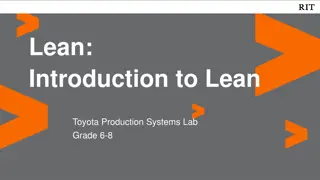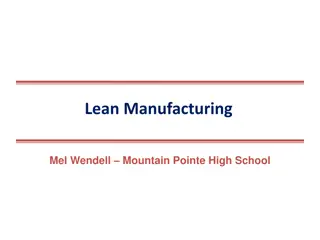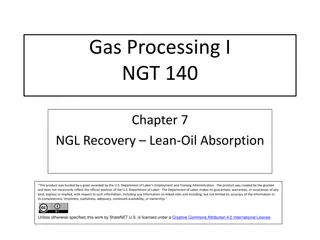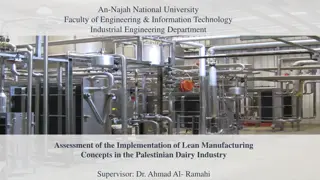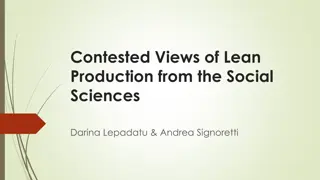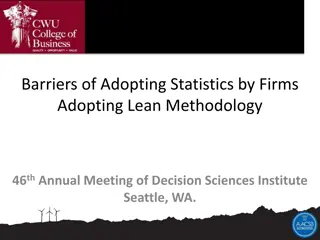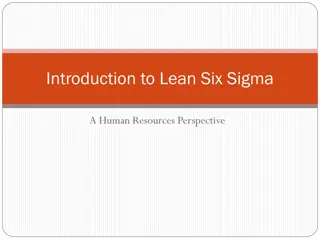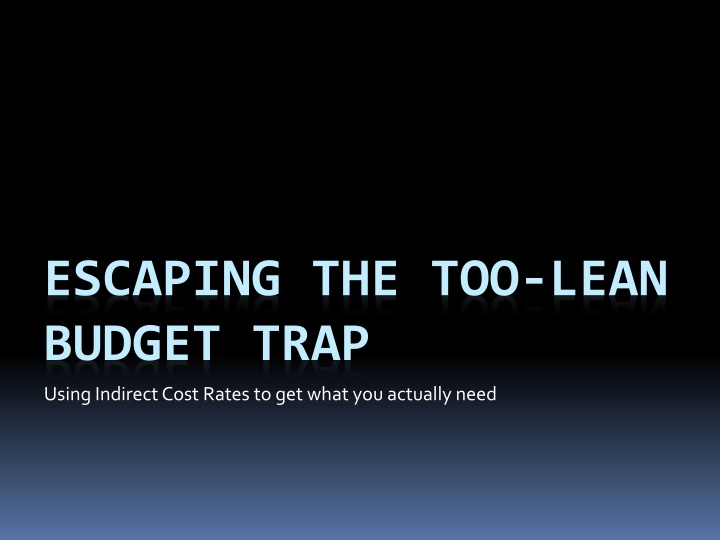
Leveraging Indirect Cost Rates for Financial Sustainability
Discover how to escape the trap of underfunded budgets by leveraging indirect cost rates to support essential infrastructure expenses and operational needs. Explore insights from industry professionals and insights on addressing common challenges faced by nonprofit organizations.
Download Presentation

Please find below an Image/Link to download the presentation.
The content on the website is provided AS IS for your information and personal use only. It may not be sold, licensed, or shared on other websites without obtaining consent from the author. If you encounter any issues during the download, it is possible that the publisher has removed the file from their server.
You are allowed to download the files provided on this website for personal or commercial use, subject to the condition that they are used lawfully. All files are the property of their respective owners.
The content on the website is provided AS IS for your information and personal use only. It may not be sold, licensed, or shared on other websites without obtaining consent from the author.
E N D
Presentation Transcript
ESCAPING THE TOO-LEAN BUDGET TRAP Using Indirect Cost Rates to get what you actually need
Presenters Rob Hoshaw Operations Director for Long Tom Watershed Council Tara Choate Grant Payment Coordinator for Oregon Watershed Enhancement Board (OWEB)
Introduction Lean budgets Struggle to fund capacity and operational costs Indirect costs viewed as negative Indirect costs are essential infrastructure An indirect cost rate agreement is a helpful tool
Poll Question: In March 2018, GuideStar asked newsletter readers to respond to the question: What is the greatest challenge your organization faces? POLL: How would you respond to that question?
National results (Its about the Money!) Finding the money to accomplish our mission -46% Other -21% Getting the word out about us and what we do -17% Staffing -7% Strategic planning/setting priorities -3% Managing donor and funder expectations -2% Building public trust in us and/or in the sector as a whole -1% Obtaining and/or incorporating the technology we need to accomplish our mission - 1% Complying with state and federal requirements for our organization -1%
The Nonprofit Starvation Cycle Expectations about costs based on past costs Cutting corners to meet expectations Organization never quite catches up
To plagiarize Dilbert Low pay, make do, and do without culture
Direct vs. Indirect Costs Be sure you understand the UNIFORM ADMINISTRATIVE REQUIREMENTS, COST PRINCIPLES, AND AUDIT REQUIREMENTS FOR FEDERAL AWARDS and Form 990 (below)
Direct costs 200.413 Direct costs (a) General. Direct costs are those costs that can be identified specifically with a particular final cost objective, such as a Federal award, or other internally or externally funded activity, or that can be directly assigned to such activities relatively easily with a high degree of accuracy.
Project 1 Juniper removal Plantings Fence Solar Panel Pump
Project 2 Roof Wood & Supplies Contractor Labor Concrete Gravel & earth moving
Indirect costs 200.414 Indirect (F&A) costs Facilities is defined as depreciation on buildings, equipment and capital improvement Administration is defined as general administration and general expenses such as the director's office, accounting, personnel and all other types of expenditures
Indirect Costs Map Electricity White Board Computer Tag Device GIS Program? Manger? Email time? Chair Desk Phone
Funding Indirect Costs De minimis (10%) Federally Negotiated Indirect Cost Rate Must have consistent funding with a federal agency Paperwork and process intensive Negotiate an Indirect Cost Rate directly with the funder Not always allowed
Why bother with an FNICR? Pros Cons Hard to find and get capacity support Builds organizational stability Another tool Based on actual costs Typically higher than de minimis High cost to oversee Requires infrastructure/knowledge to administer Can t return to non-FNICR Must have a grant directly with federal agency (cognizant agency)
The Funder Perspective Funders (like OWEB) who get federal money or use their funds as match against federal funds must respect a FNICR. OWEB Grantees by Indirect Selection 160 140 120 77% de minimis 100 80 60 18% FNICR About 18% of our grantees have an FNICR. 40 20 5% Negotiated Rate 0 1
Indirect Rates by Region* * As requested (not actuals) 16.00% 13.89% 14.00% 13.18% 12.95% 12.48% 12.00% 11.29% 11.18% 10.51% 10.00% 8.00% 6.00% 4.00% 2.00% 0.00% Region 1 Average Region 2 Average Region 3 Average Region 4 Average Region 5 Average Region 6 Average Statewide Average
OWEB Funding Criteria Does the budget reflect reasonable rates for direct costs and rates? Does the application provide an overall budget that reflects expected, and quantified watershed benefit?
Calculating an FNICR (and what is a base?) Grantees work with their cognizant agency to determine if indirect will be calculated on: Modified Total Direct Costs Salary Salary, Wages, and Benefits Some other method Make sure you understand which one you re applying for!
Unallowable Costs (MTDC method) Contracted Services Agreements more than $25,000 Includes pass through money Anything over first $25,000 must be excluded from base calculation FY20 Expense $ 35,000.00 $ 55,000.00 Standard Deduction Unallowable Cost Vendor Name Riparian Planting Contractor $ 25,000.00 $ (10,000.00) Culvert Contractor $ 25,000.00 Total $ (30,000.00) $ (40,000.00)
Ineligible Costs (direct and indirect) Education Fundraising Advertising & Marketing Printing of education, outreach, of fundraising materials Anything where related to working with public (even data entry into membership database) Credit Card fees for donations (e.g. PayPal s cut)
Actual rates Final Rate: get from 990 Provisional Rate: your best educated guess using information from last couple years
Calculating an FNICR 2016 costs 2018 rate 2019 provisional
Final vs provisional rate? Final Provisional Applicable to a specified period. Based on estimated allowable costs. Temporary rate, pending the establishment of a "final" rate for that period. Used for interim reimbursement and reporting. Applicable to a specified period. Based on the actual allowable costs. Not subject to adjustment.
Based on expenses From July 1, 2013 to June 30, 2014 Used to apply for 2016-17 grants Based on expenses From July 1, 2014 to June 30, 2015 Used to apply for 2017-18 grants Based on expenses From July 1, 2015 to June 30, 2016 Used to apply for 2018-19 grants
Getting started on an FNCIR Consistent and defensible methodology for dividing costs into direct, fundraising, and indirect Ask your CPA for guidance Board understands at high level what s happening and why Develop internal policies to help staff understand what to bill as indirect and when
Projecting next years rate Consistent methodology! Budgeting ahead Staff time Biggest driver for rate changes Office & Occupancy Costs Can t apply 100% of most costs (e.g. rent)
Staff Hours Example General (all staff do) Weekly Staff Mtgs Total Indirect Hrs Office Admin Fiscal Admin Board Mtgs Risk Mgmt Grant Writing Budge ting Hired Hours% HR Staff Titles (FTE) Executive Director (1.0) Fiscal Manager (0.75) Program Lead (1.0) Project Manager (1.0) Indirect 208 50 40 100 78.75 215.5 8 184 100 984 2080 47.32% 100.00 % 120 150 1046 42 52 150 1,560 1560 52 4 56.25 232 3 136 16 499 2080 24.00% 52 4 56.25 60 120 292 2080 14.05% Volunteer Coordinator (0.5) 26 4 56.25 52 24 162 1040 15.60% 39.57 % 458 112 289.5 611.5 11 464 266 3,498 8840
1. What is the timeline for the FNICR application process? Applications due by Dec 31 Usually ok to apply later than that! Long Tom s experience: anywhere from 4 6 months from submission to agreement in hand
2. When can we expect to be assigned a negotiator? 4-10 weeks from date of submission Contingent upon volume of submissions but also Indirect Cost Services staffing levels Other unplannables (e.g. government shutdown)
3. What happens if you get behind on FNICR? At time of application, must show that you have applied for current rate. Hard to turn in on time This year was a shutdown Cannot be paid indirect until the formal rate is provided If late, communicate with funders!
4. Can we just try the FNICR for one year? No
5. What if we no longer have a federal funder? Once you have an FNICR, you have to have one in perpetuity Apply to the agency you last negotiated an FNICR with
6. What if we have a NEW primary federal funder? May have to give new primary fed funder the opportunity to decide if they want to be your negotiator May just stick with last agency Seems if you have a long-standing relationship, you ll just apply with them year after year
Resources (Dept of Interior) Indirect Cost Services https://www.doi.gov/ibc/services/finance/indirect- cost-services 916-930-3803 ics@ibc.doi.gov Indirect Cost Services FAQ Page https://www.doi.gov/ibc/services/finance/indirect- cost-services/faqs Proposal Guidelines for Nonprofits https://www.doi.gov/ibc/services/finance/indirect- Cost-Services/nonprofit-orgs
Wrap Up Contact: Rob Hoshaw Operations Director, Long Tom Watershed Council 541-338-7055 operations@longtom.org Tara Choate Grants Payment Coordinator, OWEB 5-3-986-0184 Tara.Choate@oregon.gov

![❤[PDF]⚡ Escaping from Eden: Does Genesis Teach that the Human Race was Created](/thumb/21697/pdf-escaping-from-eden-does-genesis-teach-that-the-human-race-was-created.jpg)




